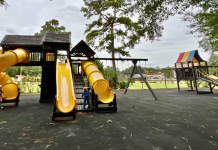{Disclosure: We’ve partnered with the American Heart Association to bring you this post. All opinions are our own. We would not promote something we did not believe to be true.}
Did you know that over 425,000 people in the United States suffer cardiac arrest outside the hospital every year?
Throughout the last two years, many health care professionals (including myself) and emergency personnel across South Carolina have lobbied for SC House Bill 3265.
In April 2016, our South Carolina Governor Nikki Haley signed into law this important bill that will bring life-saving skills to all middle and high schoolers in South Carolina. South Carolina now joins 29 other states in this requirement.
By the 2017-2018 school year, students will be equipped with life-saving skills of hands-on cardiopulmonary resuscitation (CPR) as part of their existing high school health education curriculum. This creates a great opportunity to train our youth and better protect our community with more individuals proficient in CPR skills.

Haven’t been trained on CPR yourself? Visit the American Heart Association’s 90-second “Two Steps to Staying Alive” training video. If you see a teen or adult suddenly collapse, this simplified technique involves calling 911 for assistance and applying hard and fast compressions to the center of the chest.
If you are interested in completing CPR training, visit heart.org/cpr to find a class online or near you. The more individuals we have trained, the more lives we can save.
As a health care professional myself, I have been trained extensively on basic life saving techniques. However, previous training approaches have required that the right trained person be in the right place when someone suddenly collapses and goes into cardiac arrest. This new approach will provide better opportunities that individuals equipped with life-saving skills will be utilized wherever and whenever an emergency occurs.
For more information on CPR, view the CPR Guide.













